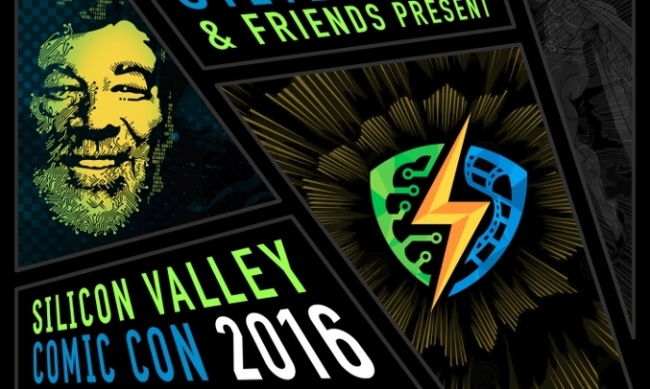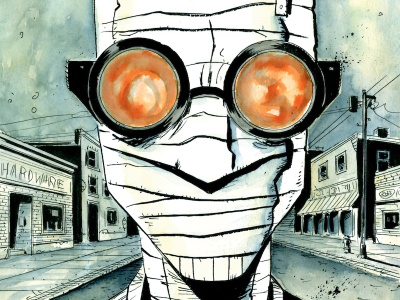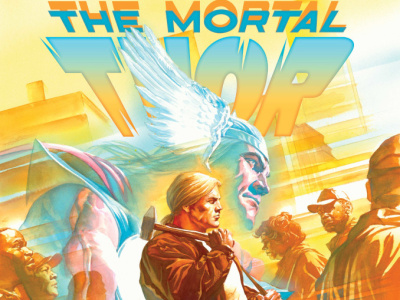There were a bunch of comic folks there as well, but they were not nearly as central to SVCC as they were to the Big Wow Comic Fest – SVCC’s previous identity before being purchased and transformed by Apple co-founder Steve Wozniak. I recognized a bunch of dealers from the usual West Coast circuit. There was also a high presence of startups and tech companies, including a part of the exhibit hall devoted to virtual reality experiences, in a nod to the “Silicon Valley” aspect of the event.
While I was there, I tracked the beat of industry announcements coming from C2E2, as well as the social aspects of that show that popped up in my Facebook feed. That sounded like a pretty great Con as well, with a slightly greater emphasis on publishing and media newsmaking.
From a fan’s perspective, this probably seems like paradise. Great cons every weekend in markets large and small, covering different aspects of geek culture from small press to big-time media and bleeding edge technology. Under the surface, it’s a different story. None of this is new, but this year the elbows seem sharper, the stakes seem higher and the dollars are getting out of control.
Competition for big names is getting crazy. Every show wants the top names to draw fans, but the bidding war for A-list talent is starting to sound unsustainable. I’ve heard reliable reports that the appearance fees for the Wizard World Show in Philadelphia in June, which lists Chris Evans, Chris Helmsworth, Tom Hiddleston, Sebastian Stan, Anthony Mackie and the stars of Back to the Future, top $1 million in guaranteed money.
Well sure. Those are all the stars of what seems likely to be 2016’s biggest movie, all in one place.
But this is having a trickle-down effect. Because this is Star Trek’s 50th anniversary, the surviving original cast members and just about everyone associated with all versions of the show, are in unusually high demand. Competition to get these names on the marquee has reportedly led to cancelled contracts, bidding wars, waivers of exclusives, a shift from guaranteed revenues for autograph sales to straight appearance fees, and other cutthroat tactics.
Cons need to make that money back somewhere, and it’s coming from three places: fans, exhibitors and sponsors.
Costs are rising for attendees. Badges for 3- and 4-day events are starting to crack the $100 level, and that’s just the start. More and more events are not only adding VIP packages, which start around $195 and can go as high as $800-900, but are also requiring fans to pre-pay for celebrity photo ops and celebrity autographs in advance. SVCC even experimented with charging a $10 surcharge for admission to the Back to the Future Panel in its big room on Saturday afternoon, only to oversell the event and not have room for prepaid customers.
Add into that equation the usually-inflated costs for parking and food around the event venues, plus lodging and air travel for out of town guests, and you’re starting to talk serious money for a family outing, before the real shopping even begins.
More fixed event costs means less to spend in the exhibit hall. Even the gold-plated nerds of Silicon Valley only have so much money to spend on their fan interests. Those who opt for “once-in-a-lifetime” VIP experiences or $100-a-pop photo opps are probably keeping a tighter grip on their wallet as they walk the aisles of the dealer’s room. And we already know that demographic shifts in fandom and generational differences in fan interests are making life tough for certain kinds of mainstay exhibitors.
Meanwhile, table costs are going up. Con promoters promise that the expensive celebrities on the marquee bring in greater numbers of fans, but those fans don’t guarantee more income to offset rising costs. That forces everyone from collectibles dealers to independent artists to balance the opportunity costs (or fear of missing out) with the mounting pressure to make table in an environment where competition precludes raising prices too high, and consumers may have less to spend on what they are selling anyway.
Sponsors are taking up more space. The big boom in con attendance has been attracting the attention of brands that want to connect with “key influencers” despite not having much organic connection to geek culture. These folks come with baskets of money to spend on “activations” and branding on things like signs and programming tracks.
Some events are more permeated with this stuff than others, but even organizers with commitment to purity have to think twice about leaving money on the table that they’d otherwise need to recoup from exhibitors and fans.
In extreme cases, branding not only colors the fan experience to an unwelcome degree, but activations take up space on the show floor or the programming schedule that could have been used for more relevant activities. When you add in the intense branding that shows themselves are imposing on their events, the whole experience at some Cons now feels packaged and inauthentic to a degree that may alienate even casual fans after a while.
Where does the race end? All these factors seem to lean into each other like a house of cards, where you can’t remove one without collapsing the whole structure.
It’s not an issue for the entire industry – just the kind of celebrity-oriented shows that have become the face of the business to most fans and observers. SDCC has long been in a world of its own, with problems and opportunities that are bigger than any of this. Small shows, festivals and special-interest cons that are happy with a turnout under 10K and no need for the whole celebrity overhead have a clear path forward. However it’s hard to see how mid-level shows in the 25-75K attendance range can manage in this landscape and still provide something fun, exciting, new and valuable for fans who now have more options than ever before.
Unless, of course, Steve Wozniak picks up the tab.
The opinions expressed in this column are solely those of the writer, and do not necessarily reflect the views of the editorial staff of ICv2.com.
Rob Salkowitz (@robsalk) is the author of Comic-Con and the Business of Pop Culture.









